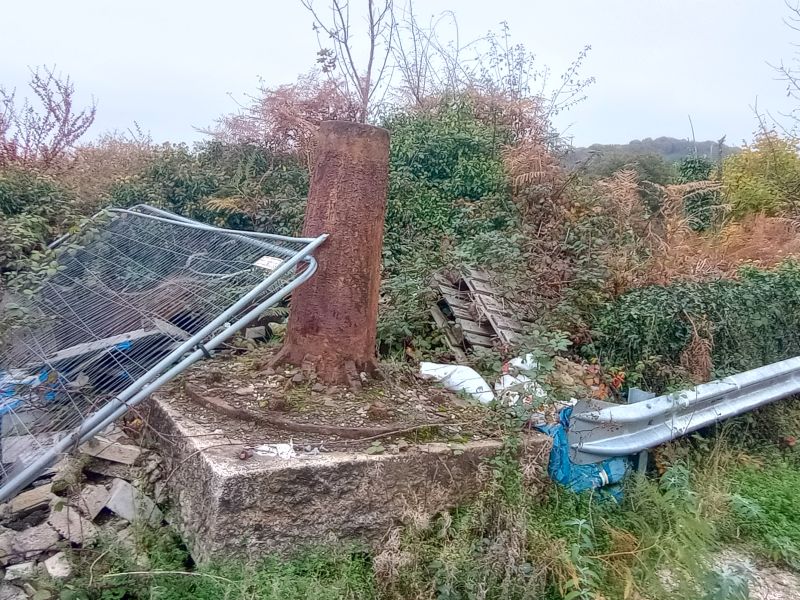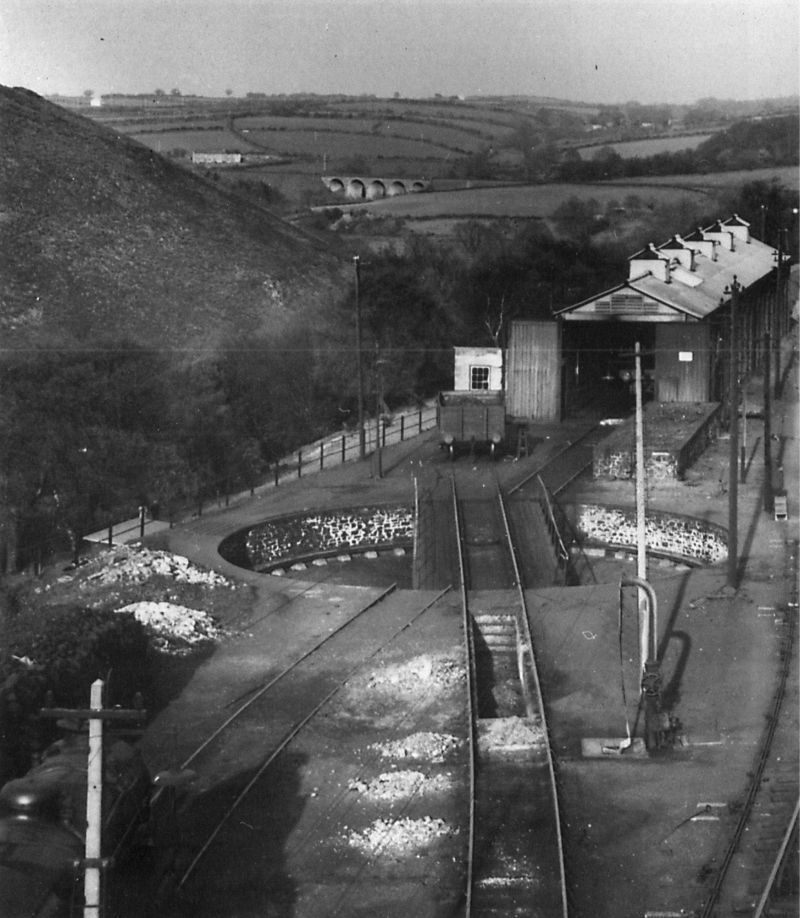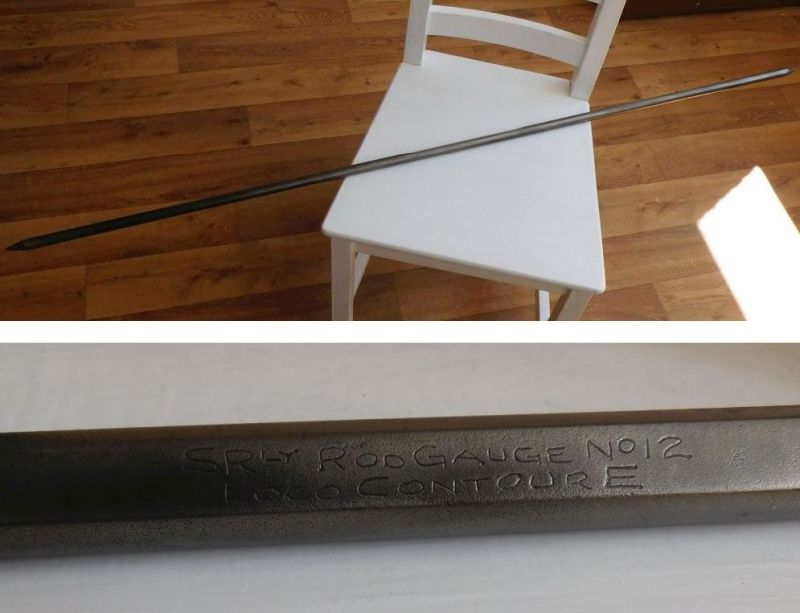News
News items relating specifically to the museum, or to aspects of the line's history.
Tarka and Okehampton lines dodged Beeching
An interesting article has appeared on Devonlive about Richard Burningham's research into BR's attempts in 1965 to close the Barnstaple and Okehampton lines. Read about it here.
Rail chair donation
20/08/2025
 1904 London and South Western Railway rail chair |
Once again we are grateful to Colin Burges of the Exeter and Teign Valley Railway for his latest donation. It's a 1904 London and South Western Railway rail chair, complementing the track items already in our museum collection. It was found at Norton Fitzwarren in the early 1970s. Like all the artefacts we've received from Colin, it's been nicely prepared for display with a fresh coat of paint, dummy screws and new ferrules (in nylon; the originals would have been oak).
Two mystery wheels
20/08/2025
Recently we have become custodians of a couple of interesting old wheels which may prove to have local railway connections.
The first was donated by Graham Coules, who wanted to return it to the Moors after 50 years in his garage. Originally it was found half buried alongside the trackbed of the railway between Princetown and Foggintor. Rough National Grid reference 580732. It’s about 12” in diameter, with an ‘axle’ hole of about 3” diameter.
 The front of the Princeton wheel |
 The back of the Princeton wheel |
The second wheel was found in the East Okement upstream of Simmons Park, somewhere below the former Tramlines Shed. As the ‘as found’ photo shows, it was heavily encrusted with stones and compacted sediments. We have chipped off the big lumps and given it a blast with a pressure washer. It is about 15” diameter, with a hole diameter of about 1.75”. It would be nice to think it came from a vehicle used on the enigmatic and almost completely undocumented Fatherford Tramway.
 The Fatherford wheel as found |
 The back of the Fatherford wheel |
 The front of the Fatherford wheel |
Both are flanged wheels which must have been free running on shafts or axles, and with damage which probably explains why they were discarded. A railway origin for either isn’t convincing; the ‘Fatherford’ wheel in particular could equally have been a pulley for belt driven machinery.
Does anyone have any ideas?
Turntable
02/11/2024
 Photographer: Jon Kelsey |
 Photographer: Jon Kelsey |
Here are a couple of pretty unprepossessing photographs, taken at the top end of the station carpark. In amongst the junk, we think they show the remains of Okehampton's earlier turntable, removed in October 1947. At 50 feet long it would have been too short for any likely tender engine, and would have been overdue for replacement.
It looks as if the handiest way for the Southern Railway to dispose of the components was to bury them. They were excavated by contractors building the 'permeable' car park a couple of years ago, and placed in the former enginemans' lobby area of the loco shed.
The first photo shows the main cast iron tapered spindle, bolted to a large block of granite. I.e. this is the central pivot about which the turntable rotated. The second photo is less clear, but we're pretty sure it shows the component which fitted on to the spindle, lying on its side. It would have had the two arms of the deck attached to it, and some sort of hefty bearing enabling it to rotate on the spindle. As far as we know, no other bits have emerged, so perhaps everything else was small enough to dispose of more thoroughly.
Apart from being covered in junk and undergrowth, the components foul the opening of one of the access gates, so something needs to be done. We are in dialogue with the owner, Network Rail, and others, about how best these Victorian bits can be preserved and interpreted for the public, but of course they have many other priorities.
[See the Maps page for details of the location of Okehampton's turntables].
Thanks to the generosity of the Middleton Press, this is what it looked like:
 Terrific 'Cam' Camwell 1938 view from the tall starting signal post, showing the 50' turntable and locomotive shed at Okehampton. Fatherford Viaduct in the background. Reproduced (with permission) from: Branch Line to Bude published by Middleton Press (01730 813169, middletonpress.co.uk) |
Museum Donations
10/07/2024
Recently, Okehampton Station was visited by DRA's good friend Colin Burges of the Exeter and Teign Valley Railway. Colin very kindly donated 4 items for the station museum. They were a London & South Western Railway padlock (stamped 'L& SWR Co' on the shackle), two Southern Railway coat buttons, a wheelset back-to-back gauging rod (stamped 'SRly GAUGE No12 LOCO CONTOUR E'), and the last working timetable for the through route (inscribed 'Okehampton Booking Office').
The gauging rod needs some explanation. The back-to-back dimension of a rail vehicle's wheelset is the distance between the inner faces of the pair of wheels. On a standard gauge (4' 8 1/2 ") rail, it has a nominal dimension of 4' 5 5/8". It is important that the dimension isn't undersized (i.e. the wheels too close together), otherwise when passing through points there is a danger of one wheel derailing as the one at the other end of the axle is constrained by the checkrail. To check this parameter, locomotive sheds kept a gauging rod such as this one. If it would fit between the wheels then the wheelset was OK.
The hardware items are now on display in the Arthur Westlake Museum. The timetable has been added to the already rather large document and photograph backlog of DRA's hard working archive volunteer, David Naylor.
Following his visit, Colin unloaded his bicycle from his little truck, and rode a 35 mile route through Halwill and Hatherleigh. You can read all about it here, in number 98 in a series of travelogues, mostly on West Country railway themes, which enjoy the title 'Scouting'. They are affectionate and highly informative essays, with occasional necessary acerbity; you might like to set aside a few evenings and read the whole series.
 The interesting, if not very photogenic, gauging rod. |
 LSWR padlock and SR coat buttons (not to same scale!) |
 1967-1968 working timetable |

 Home
Home